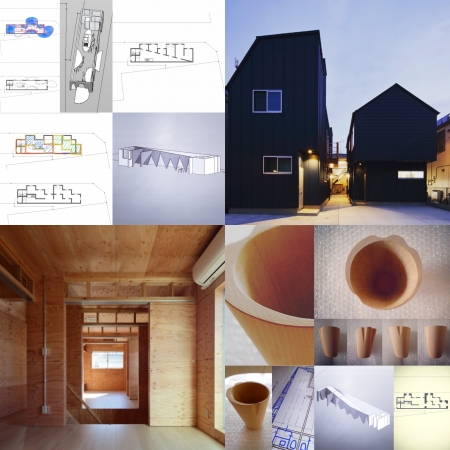気持ちの可視化
機能を組み替えただけの空間は面白くない。例えば、水回りという機能が突然出現しても困惑するだけだし、それでは人が機能に従うことで空間が成り立つことを良しとすることになる。
何よってプランが決まるのか、その正解はひとつではないが、人と建築の関係性の範疇で考えたいと思う。建築は人が使う物だから、それが当たり前のように思われるかもしれないが、人を廃することで成り立つ建築もある。
今考えているのは、人が自身の気持ちによって自律的に建築と向き合い、それに応答する建築から他律的に影響を受けることにより、建築や空間の見え方が決まるというものであり、人と建築の関係性に気分や感情を含めた「気持ち」を持ち込むことである。
そして、その「気持ち」が建築として可視化されるようなことである。
"Visualization of feelings"
The space where the functions are just rearranged is not interesting. For example, even if the function of water circulation suddenly appears, it will only be confusing, and it will be good if a person follows the function to establish a space.
There is more than one correct answer as to why the plan is decided, but I would like to think in the category of the relationship between people and architecture. It may seem natural because architecture is something that people use, but there are also architectures that consist of abolishing people.
What I am thinking now is that people autonomously face architecture according to their own feelings, and the appearance of architecture and space is determined by being heteronomously influenced by the architecture that responds to it. It is to bring "feelings" including moods and feelings into the relationship of architecture.
And that "feeling" is visualized as architecture.


